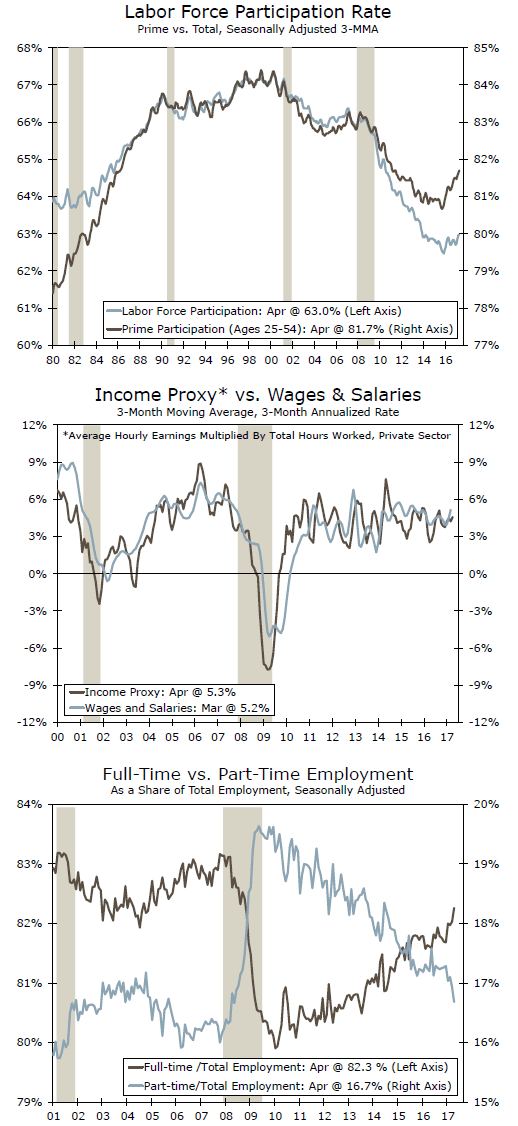Nonfarm employment bounced back from its weather-induced March slowdown. Payrolls added 211,000 jobs in April and the unemployment rate fell to 4.4 percent. Hours worked and hourly earnings also rose solidly.
A Solid Report
Nonfarm employment rose by 211,000 in April and the unemployment rate fell to 4.4 percent. Net revisions to prior months’ data only deducted about 6,000 jobs, and the average gain for the past three months remains a solid 174,000 jobs. Job gains were fairly broad-based, with just over 60 percent of the industry groups surveyed by the BLS adding jobs in April. The overall quality of jobs being created improved, with a substantial acceleration in hiring for full-time positions and deceleration in part-time jobs.
The employment data through the first four months of this year have been significantly impacted by a number of seasonal influences. Unseasonably mild winter weather in the Northeast and Midwest allowed for construction activity to ramp up a little earlier than usual this year, leading to strong gains in construction jobs in January and February. With hiring rising earlier in the year, there was less of subsequent pick up this spring, leading to smaller-than-usual seasonally-adjusted gains in March and April.
The late Easter also wreaked havoc on employment data at retailers and in hospitality. Easter came at the end of the April survey week, which weighed on retail and hospitality employment in March and set the table for a strong bounce back in April, particularly in the hospitality sector, which added 55,000 jobs. About half the increase in hospitality jobs was in food services & drinking places. By contrast, retailers added just 6,000 jobs, reflecting store closings announced after this past year’s disappointing holiday shopping season and the loss of market share to online retailers.
Average hourly earnings rose 0.3 percent in April and are now up 2.5 percent year-to-year. Hiring in higher-paying industries grew more modestly. Construction added just 5,000 jobs and manufacturers added 6,000 jobs. Hiring in mining & logging rose by 10,000 positions, reflecting increased oil production. Healthcare & social services, professional & business services and financial services all posted solid gains in April. While average hourly earnings rose only modestly, total hours worked rose by a stronger 0.5 percent in April. Taken together, the two gains should produce solid income growth in April and help drive a rebound in consumer spending during the second quarter.
The unemployment rate fell to 4.4 percent in April, as household employment outpaced labor force growth. The labor force participation rate fell slightly during the month but the participation rate for prime-working age workers actually increased. The broader U-6 measure of unemployment fell to 8.6 percent, which in part reflects the recent shift toward more fulltime jobs being created relative to part-time positions. The improved mix of jobs being created should pull more job seekers into the labor force. The acceleration in full-time positions is also consistent with the recent acceleration in household formations and homeownership.













